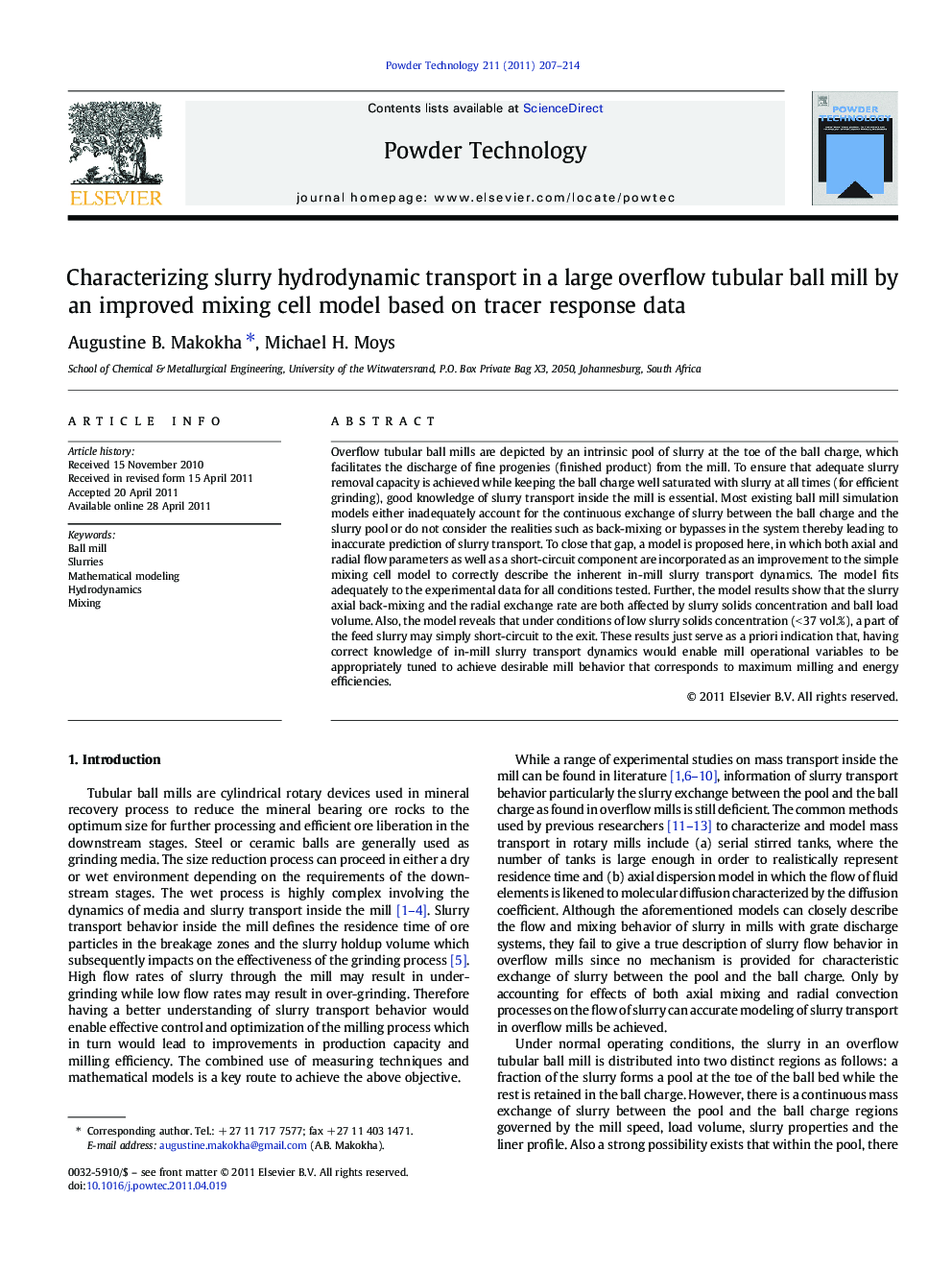| کد مقاله | کد نشریه | سال انتشار | مقاله انگلیسی | نسخه تمام متن |
|---|---|---|---|---|
| 237491 | 465710 | 2011 | 8 صفحه PDF | دانلود رایگان |

Overflow tubular ball mills are depicted by an intrinsic pool of slurry at the toe of the ball charge, which facilitates the discharge of fine progenies (finished product) from the mill. To ensure that adequate slurry removal capacity is achieved while keeping the ball charge well saturated with slurry at all times (for efficient grinding), good knowledge of slurry transport inside the mill is essential. Most existing ball mill simulation models either inadequately account for the continuous exchange of slurry between the ball charge and the slurry pool or do not consider the realities such as back-mixing or bypasses in the system thereby leading to inaccurate prediction of slurry transport. To close that gap, a model is proposed here, in which both axial and radial flow parameters as well as a short-circuit component are incorporated as an improvement to the simple mixing cell model to correctly describe the inherent in-mill slurry transport dynamics. The model fits adequately to the experimental data for all conditions tested. Further, the model results show that the slurry axial back-mixing and the radial exchange rate are both affected by slurry solids concentration and ball load volume. Also, the model reveals that under conditions of low slurry solids concentration (< 37 vol.%), a part of the feed slurry may simply short-circuit to the exit. These results just serve as a priori indication that, having correct knowledge of in-mill slurry transport dynamics would enable mill operational variables to be appropriately tuned to achieve desirable mill behavior that corresponds to maximum milling and energy efficiencies.
The hydrodynamic transport of mineral slurry in an overflow discharge ball mill has been described by an improved mixing cell model based on experimental residence time distribution (RTD) data. The model incorporates both axial and radial flow parameters as well as a short-circuit component as an improvement to the simple mixing cell model to correctly describe the inherent in-mill slurry transport dynamics as found in overflow ballmills.Fig. GA. Schematic representation of the improved mixing cell model describing typical slurry flow and mixing pattern inside an overflow discharge ball mill.Figure optionsDownload as PowerPoint slideResearch highlights
► A model is proposed to characterize the in-mill slurry hydrodynamic transport on the basis of experimental RTD data.
► It accounts for non-ideal flow conditions such as back-mixing, radial convective flow as well as bypass flows.
► Effects of both slurry % solids and ball load volume on slurry hydrodynamic transport and mixing were evident in the results.
► Slurry back-mixing and rate of influx and efflux in the ball charge improved as the slurry % solids decreased.
► Possibilities of bypass flows for conditions of less dense slurry (< 37 vol. % solids).
Journal: Powder Technology - Volume 211, Issues 2–3, 10–25 August 2011, Pages 207–214